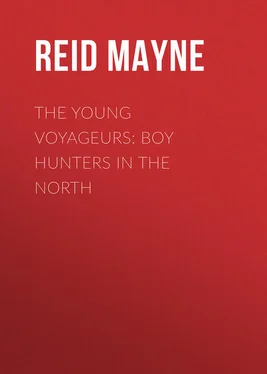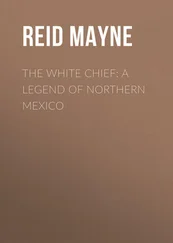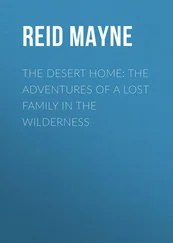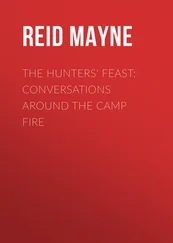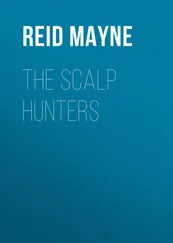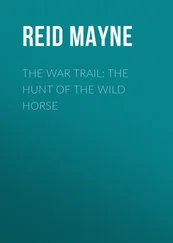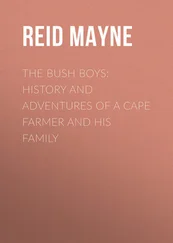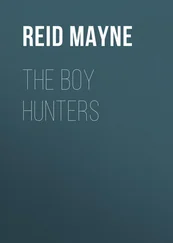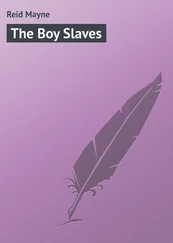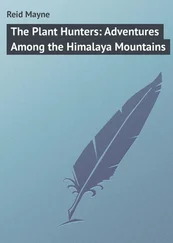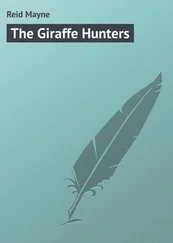Mayne Reid - The Young Voyageurs - Boy Hunters in the North
Здесь есть возможность читать онлайн «Mayne Reid - The Young Voyageurs - Boy Hunters in the North» — ознакомительный отрывок электронной книги совершенно бесплатно, а после прочтения отрывка купить полную версию. В некоторых случаях можно слушать аудио, скачать через торрент в формате fb2 и присутствует краткое содержание. Жанр: literature_19, foreign_antique, foreign_prose, foreign_children, на английском языке. Описание произведения, (предисловие) а так же отзывы посетителей доступны на портале библиотеки ЛибКат.
- Название:The Young Voyageurs: Boy Hunters in the North
- Автор:
- Жанр:
- Год:неизвестен
- ISBN:нет данных
- Рейтинг книги:5 / 5. Голосов: 1
-
Избранное:Добавить в избранное
- Отзывы:
-
Ваша оценка:
- 100
- 1
- 2
- 3
- 4
- 5
The Young Voyageurs: Boy Hunters in the North: краткое содержание, описание и аннотация
Предлагаем к чтению аннотацию, описание, краткое содержание или предисловие (зависит от того, что написал сам автор книги «The Young Voyageurs: Boy Hunters in the North»). Если вы не нашли необходимую информацию о книге — напишите в комментариях, мы постараемся отыскать её.
The Young Voyageurs: Boy Hunters in the North — читать онлайн ознакомительный отрывок
Ниже представлен текст книги, разбитый по страницам. Система сохранения места последней прочитанной страницы, позволяет с удобством читать онлайн бесплатно книгу «The Young Voyageurs: Boy Hunters in the North», без необходимости каждый раз заново искать на чём Вы остановились. Поставьте закладку, и сможете в любой момент перейти на страницу, на которой закончили чтение.
Интервал:
Закладка:
“For a long time it was fancied there was but one species of swan. It is now known that there are several, distinguished from each other in form, colour, voice, and habits. ‘White as a swan,’ is a simile as old, perhaps; as language itself. This, I fancy, would sound strangely to the ears of a native Australian, who is accustomed to look upon swans as being of the very opposite colour, for the black swan is a native of that country.
“According to the naturalist Brehm, who has given much attention to this subject, there are four distinct species of swans in Europe. They are all white, though some of the species have a reddish orange tinge about the head and neck. Two of them are ‘gibbous,’ that is, with a knob or protuberance upon the upper part of the bill. One of these Brehm terms the ‘white-headed gibbous swan’ ( Cygnus gibbus ). The other is the ‘yellow-headed’ ( Cygnus olor ); and this last also is known as the mute or tame swan, because it is that species most commonly seen in a tame state upon the ornamental lakes and ponds of England. The other two European species Brehm has designated ‘singing swans,’ as both of them utter a note that may be heard to a considerable distance.
“The black swan of Australia ( Cygnus niger ) has been naturalised in Europe, and breeds freely in England, where, from its great size and peculiar markings, it is one of the most ornamental of water-fowls. It is, moreover, a great tyrant, and will not permit other birds to approach its haunt, but drives them off, striking them furiously with its strong broad wings.
“Until a late period the swans of America were supposed to be all of one kind. This is not the case. There are now known to be three distinct species inhabiting the fur countries, and migrating annually to the South. That which is best known is the ‘whistler,’ or ‘hooper’ ( Cygnus Americanus ), because it is the species that abounds in the old States upon the Atlantic, and was therefore more observed by naturalists. It is believed to be identical with one of the European ‘singing’ swans ( Cygnus ferus ), but this is not certain; and for my part, I believe they are different, as the eggs of the American swan are greenish, while those of its European congener are brownish, with white blotches.
“The ‘hooper’ is four and a half feet in length, though there are males still larger, some of them measuring five feet. Its colour is white, except upon the head and back part of the neck, where there is a coppery tinge. The bill and feet are black. From the angle of the mouth to the eye there is a small naked ‘cere,’ of a bright yellow colour. These swans, like others of the genus, do not care much for the salt water. They are rarely seen upon the sea, except near its shores, where they may find the aquatic plants upon which they feed. Nor do they go out upon the large lakes. When found upon these, it is generally close in to the land. This is accounted for by the fact that the swans do not ‘dive’ for their food, but stretch down for it with their long necks, which Nature has peculiarly adapted to this very purpose. Their favourite food consists of the roots of aquatic plants, which are often farinaceous. As these grow best in the shallow small lakes and along the margins of rivers, such places are the usual resort of the swans. Although their diet is a vegetable one, it is not exclusively so, as they will eat frogs, worms, and small fish. Unlike the ducks and geese, they rarely feed upon land, but while floating upon the surface of the water. They walk but awkwardly on land, and are at home only on water or in the air. In the air they are quite at home, and fly so swiftly that it is no easy matter to shoot them, especially when going before the wind. At such times they are supposed to fly at the rate of one hundred miles an hour. When moulting, and unable to rise into the air, it is no easy matter to follow them even with a canoe. By means of their broad feet and strong wings, they can flutter so quickly over the water, now and then diving, that the hunter cannot overtake them in his boat, but is obliged to use his gun in the pursuit.
“The ‘hoopers’ are migratory, – that is, they pass to the north every spring, and southward again in the autumn. Why they make these annual migrations, remains one of the mysteries of nature. Some believe they migrate to the north, because they there find those desolate uninhabited regions where they can bring forth their young in security. But this explanation cannot be the true one, as there are also uninhabited regions in the south, even under the equator, where they may be equally free from the presence of man. Another explanation might be offered. In hot and tropical countries most of the small lakes and swamps, where these birds love to dwell, dry up during the summer months: hence the necessity of a migration to colder and moister regions. But this would only hold good of the wading and water birds; it would not account for the migration of the many other birds of passage.
“A better explanation may be this: The north and the cold zones are the natural habitat of most migratory birds. It is there that they bring forth their young, and there they are at home. In tropical regions they are only sojourners for a season, forced thither, some of them, by a cold which they do not relish; but others, such as the water-fowl, by the frost, which, binding up the lakes, rivers, and swamps, hinders them from procuring their food. They are thus compelled to make an annual migration to the open waters of the South, but as soon as the ice has given way before the genial breath of spring, they all return rejoicing to their favourite home in the North, when their season of love commences.
“The ‘hoopers’ follow this general law, and migrate to the northward every spring. They breed upon islets in the numerous lakes that stud the whole northern part of the American continent. Eminences in swamps are also chosen for breeding places, and the ends of promontories that jut out into the water. The spot selected is always such that the swan, when seated upon her nest, can have a view of the surrounding country, and detect any enemy long before it can approach her. The top of the dome-shaped dwellings of the musk-rat, or musquash ( Fibre zibethicus ), is often selected by the swan for her nest. These curious little houses are usually in the midst of impenetrable swamps: they are only occupied by their builders during the winter; and as they are deserted by them in early spring, they are therefore quite at the service of the swan for the ‘balance of the season.’ The bird makes a large cavity in the top, and lines it with such reeds and grass as may be found near the spot.
“The hooper lays from six to eight eggs, and sits upon them for a period of six weeks, when the cygnets come forth covered with a thick down of a bluish-grey colour. While sitting upon her eggs, the swan is exceedingly watchful and shy. She ‘faces’ towards the point whence she most apprehends danger. When the weather is severe, and the wind cold and keen, she changes into that position which is most comfortable. If her nest be upon a promontory instead of an island, she usually sits with her head to the land, as she feels secure that no enemy will reach her from the waterside. From the land she has not only man to ‘look out’ for, but the wolverene ( Gulo luscus ), the lynx ( Felis Canadensis ), foxes, and wolves.
“The Indians often snare the swan upon her nest. Of course the snare – a running noose made from the intestines of the deer – is set in her absence. It is placed upon the side by which she enters, as these birds enter and leave the nest upon opposite sides. The snare must be arranged with great care, and with clean hands ; and the Indians always take the precaution to wash their hands before setting it, else the swans, whose sense of smell is very acute, will perceive the presence of danger, and will not only keep away for a time, but sometimes desert the eggs altogether. There are many other birds that have a similar habit.
Читать дальшеИнтервал:
Закладка:
Похожие книги на «The Young Voyageurs: Boy Hunters in the North»
Представляем Вашему вниманию похожие книги на «The Young Voyageurs: Boy Hunters in the North» списком для выбора. Мы отобрали схожую по названию и смыслу литературу в надежде предоставить читателям больше вариантов отыскать новые, интересные, ещё непрочитанные произведения.
Обсуждение, отзывы о книге «The Young Voyageurs: Boy Hunters in the North» и просто собственные мнения читателей. Оставьте ваши комментарии, напишите, что Вы думаете о произведении, его смысле или главных героях. Укажите что конкретно понравилось, а что нет, и почему Вы так считаете.
